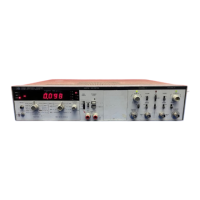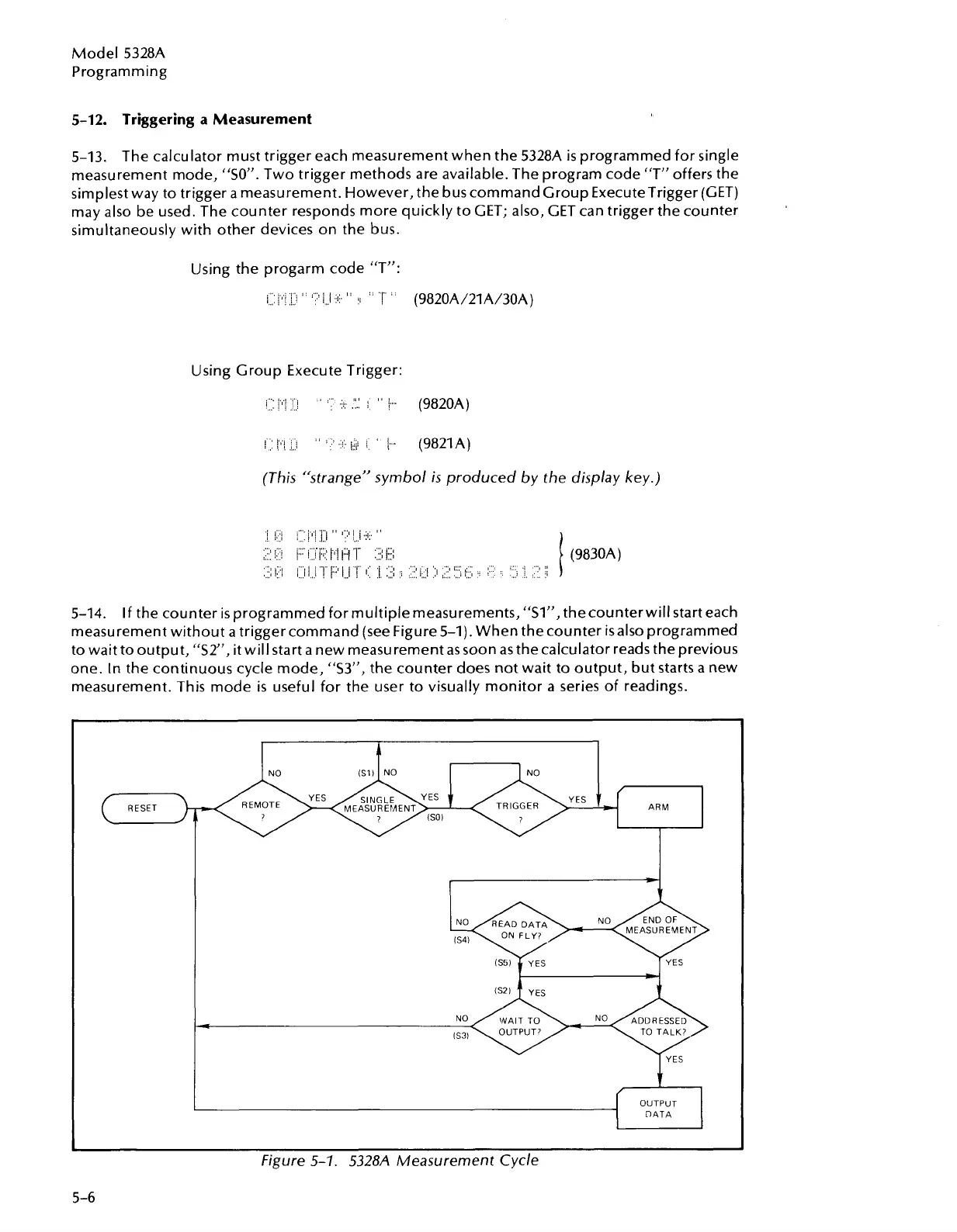Model 5328A
Programming
5-12.
Triggering a Measurement
5-13. The calculator must trigger each measurement when the 5328A
is
programmed for single
measurement mode,
"SO".
Two trigger methods are available. The program code "T" offers the
simplest way to trigger a measurement. However, the bus command Group ExecuteTrigger (GET)
may also be used. The counter responds more quickly to GET; also, GET can trigger the counter
simultaneously with other devices on the bus.
Using the progarm code
"T":
Using Group Execute Trigger:
..
..,,.,
.,..
/
;..
.
,,I
,
,I
!
!
!
,, ,
..
.
, ,
..
,
:
.
i....
(9820A)
I.../.,./:./
i:;..
..
..
e
4
..I
!!..I
,
j
....
(9821 A)
(This "strange" symbol
is
produced by the display key.)
5-14.
If
the counter is programmed for multiple measurements,
"SI",
thecounter will start each
measurement without a trigger command (see Figure 5-1). When thecounter isalso programmed
to wait to output, "S2", it will start a new measurement as soon as the calculator reads the previous
one. In the continuous cycle mode, "S3", the counter does not wait to output, but starts a new
measurement. This mode
is
useful for the user to visually monitor a series of readings.
NO
RESET TRIGGER
YES
6
I-[
ARM
t
OUTPUT
DATA
Figure
5-1.
5328A
Measurement Cycle
Artisan Technology Group - Quality Instrumentation ... Guaranteed | (888) 88-SOURCE | www.artisantg.com

